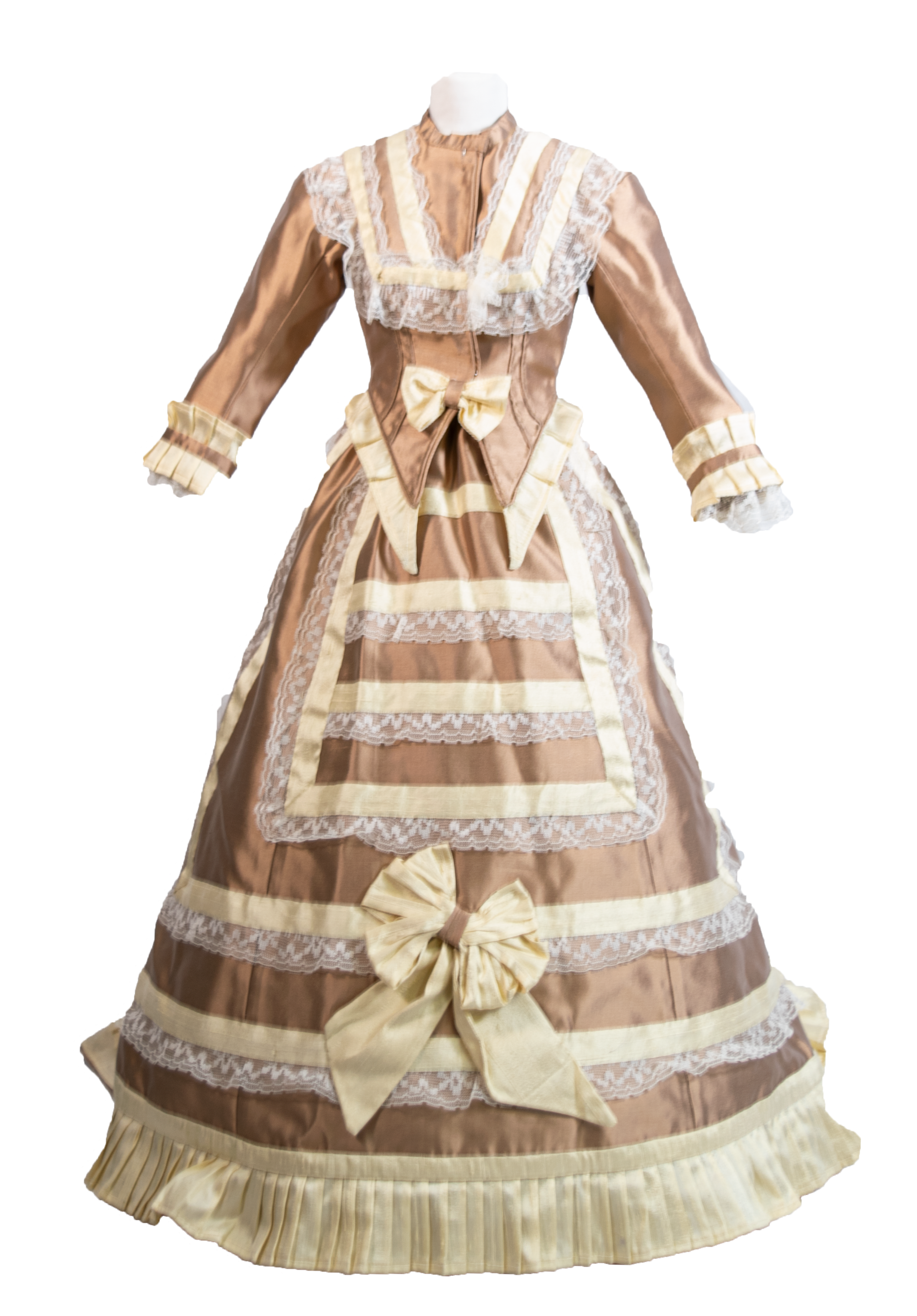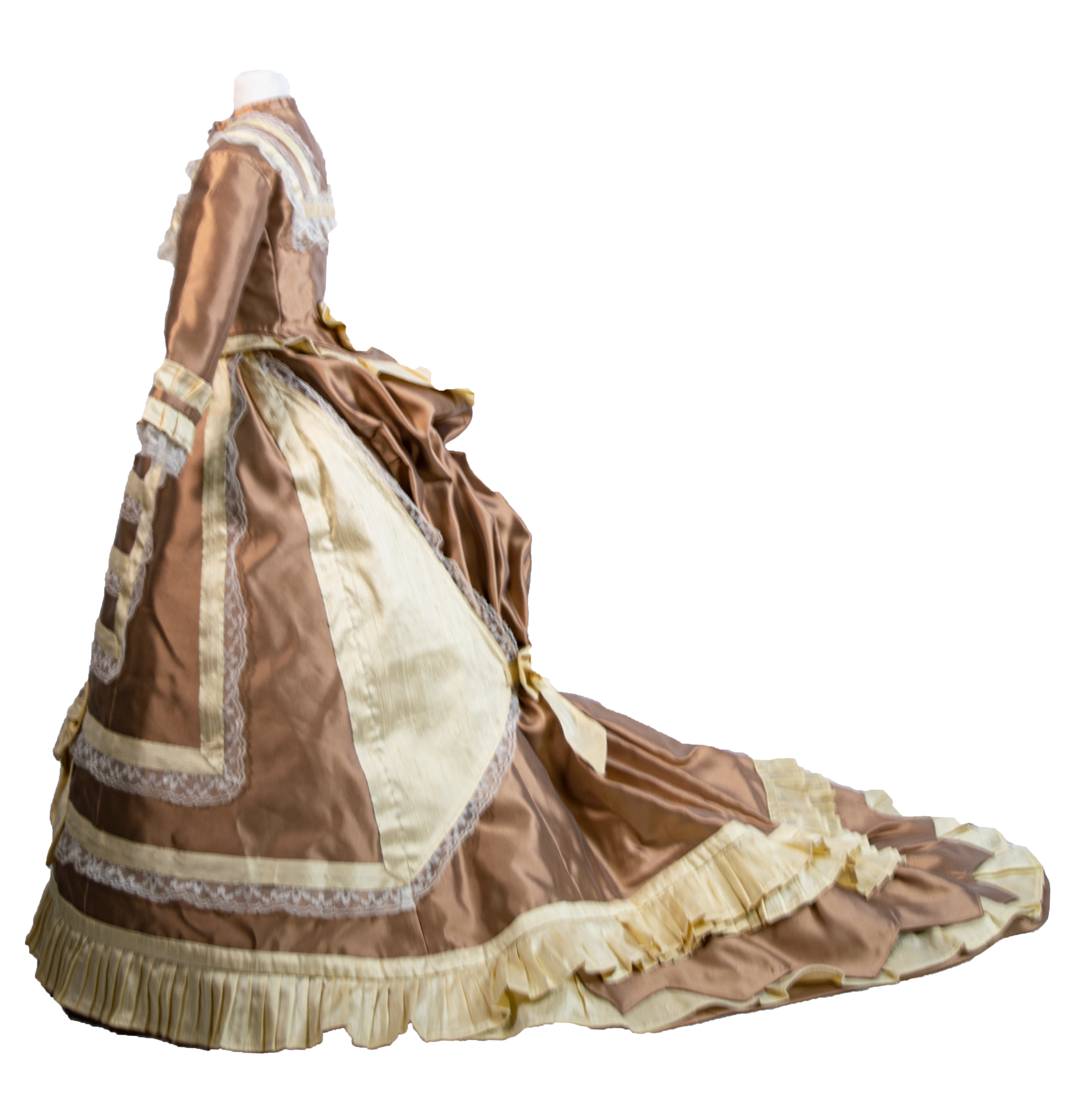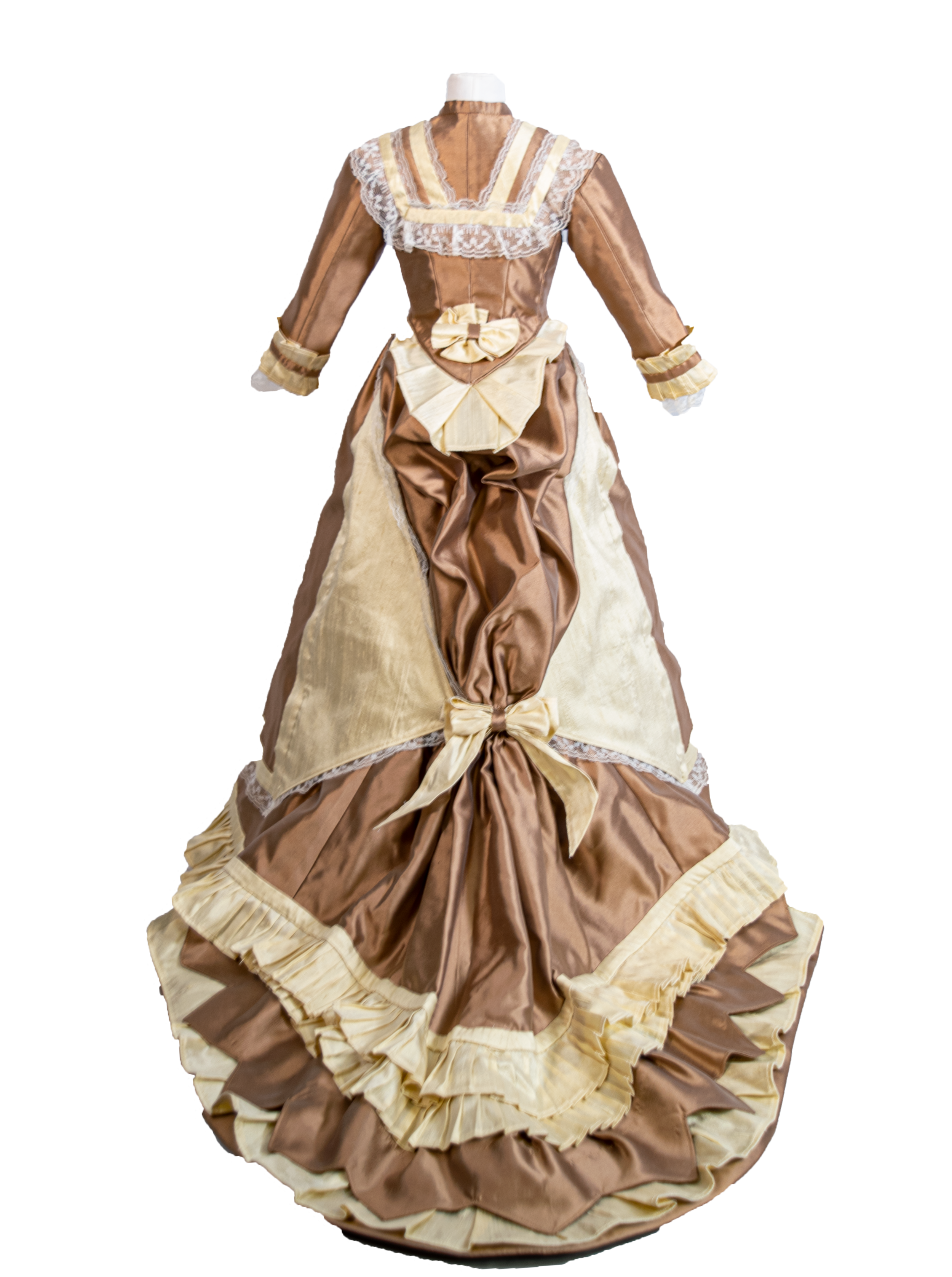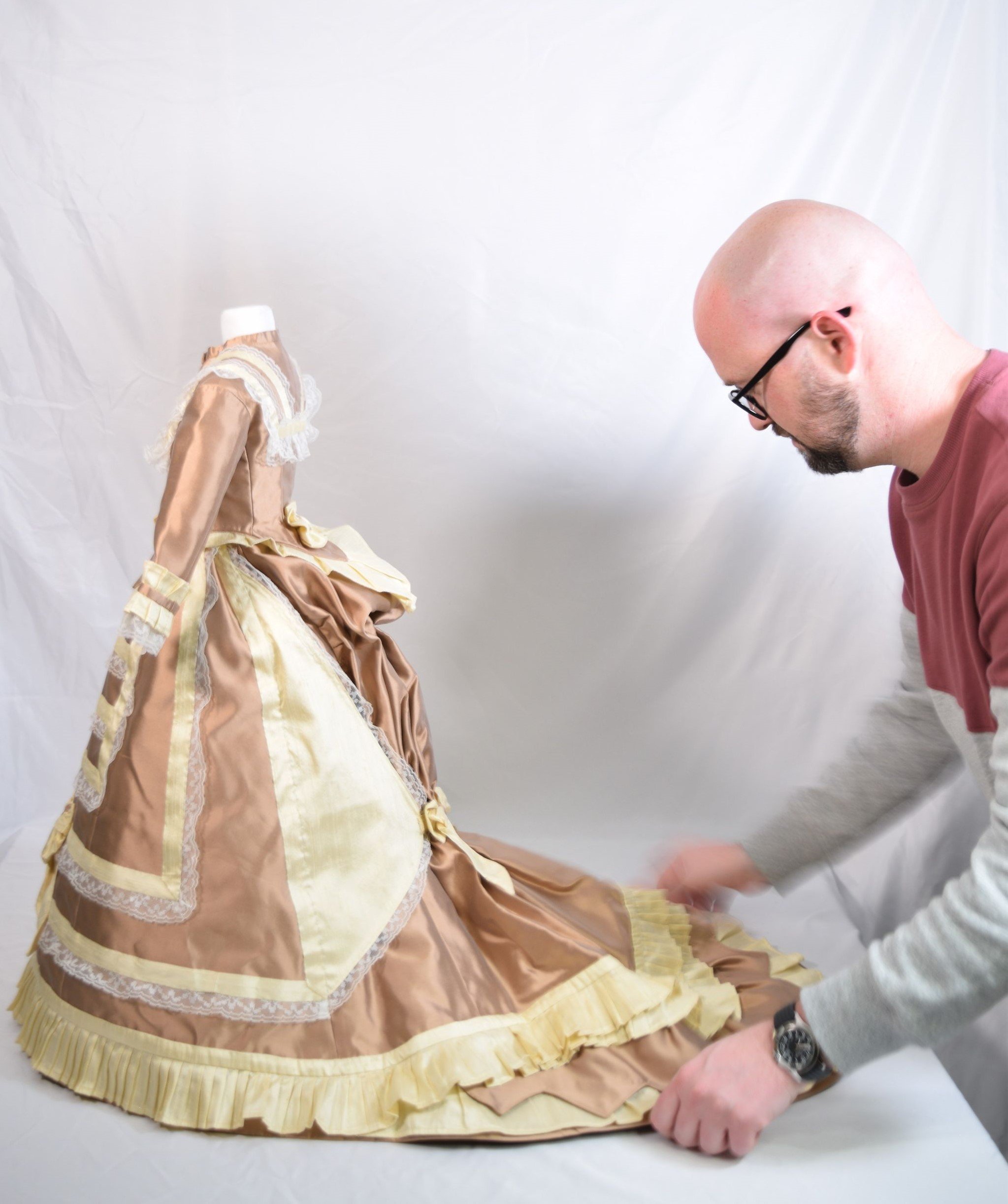Synthetic Satin, Silk Dupioni, Nylon Lace (Photos by Joshua Purvis)
Worn over a small cage crinoline with a bustle shaped back and a muslin petticoat. Inspired by an ensemble of possible French origin held by the Metropolitan Museum of Art, New York, tentatively dated 1867.

Inspirational Image Front View
This ensemble, possibly of French origin, is held at the Metropolitan Museum of Art. Very little is known about its designer, maker, or original use. I have suggested its use as a wedding ensemble.
Following the wedding of Queen Victoria and Prince Albert in 1840, the white wedding gown for the wealthy became increasingly popular. Most fashionable weddings were held in the morning, so the elbow length sleeves and high neckline would be appropriate.

Inspirational Image Side View
The train, while popular for fashionable dresses was appropriate for any time of day, could be looped up to a shorter length for walking. Its released length coupled with a day bodice, however, leads me to believe that this was a special occasion dress, most likely for a wedding.
The train would have been supported and protected by a removable dust ruffle called a balayeuse. This would be made from a harder wearing and washable fabric, and would either button or tack into the train. It would also add weight to the train, keeping it appropriately spread out and assist with movement.
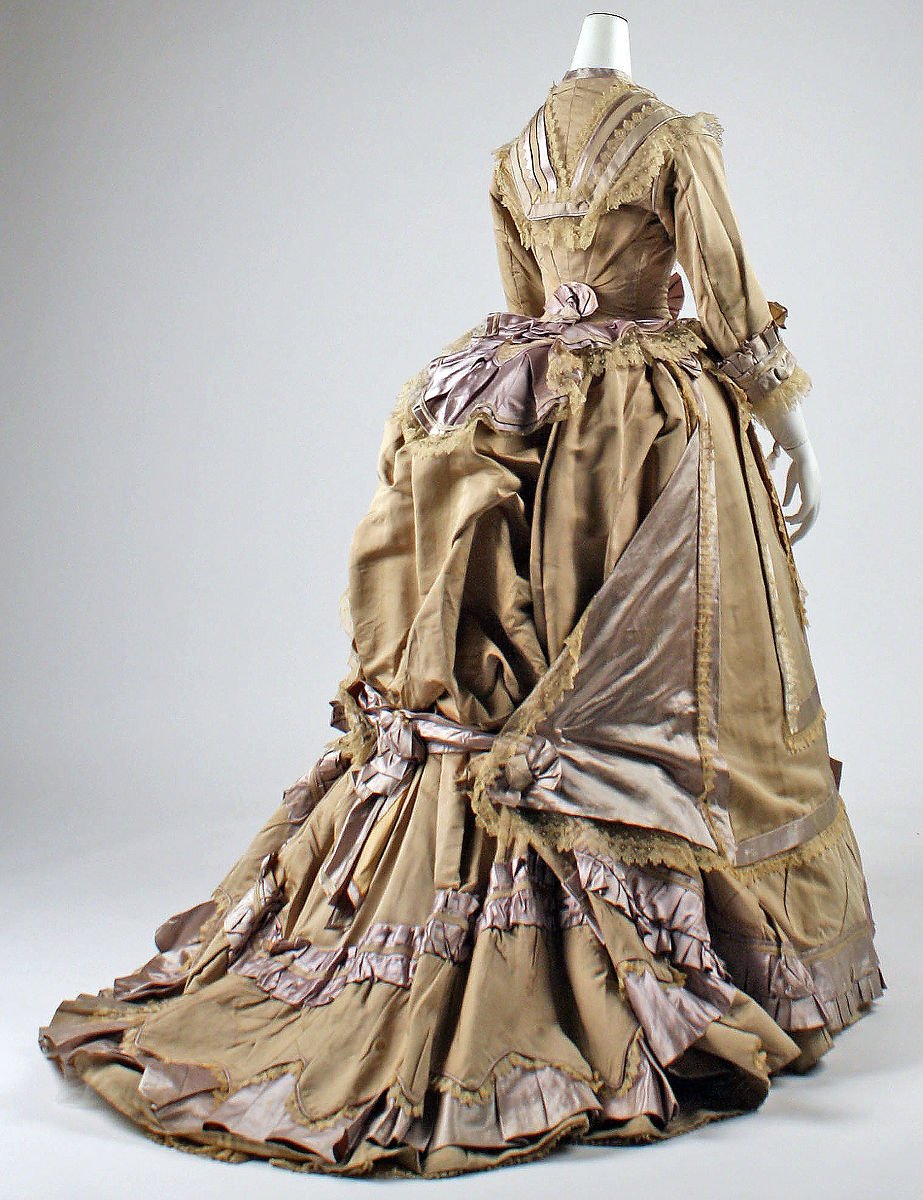
Inspirational Image Back View
The bodice and skirt are two separate pieces. Another bodice with shorter sleeves and a lower neckline could have been made to match the skirt for evening wear.

Undergarment
The late 1860s into the mid 1870s was a transitional period in silhouette and decoration. The round hoops of the early 1860s began to shift toward the back becoming more elliptical, and by the early 1870s became a highly structured bustle with lower round hoops to support the skirt hem. Decoratively, more ruffles, pleating, flounces, and bows began to fill the expanse of the skirt.
Drawing from Norah Waugh’s book, Coresets and Crinolines.
